Socrates was right, of course. The unexamined life really is not worth living.
But where do we begin that interrogation? If we take seriously the aspiration of our college’s patron, “faith seeking understanding,” then the humanities are certainly one good place. No matter which of the many paths we follow in our study or expression of language and literature, fine and performing arts, history, philosophy, or theology, each will lead us to the kind of reflection Socrates and Saint Anselm encourage.
This is why, at Saint Anselm, students are invited—OK, required and cajoled—to spend their first four months at their new school wrestling with three fundamental questions that we hope will worry and inspire them for the rest of their lives: Who am I? What is my responsibility toward others? What is my relationship with the Divine?
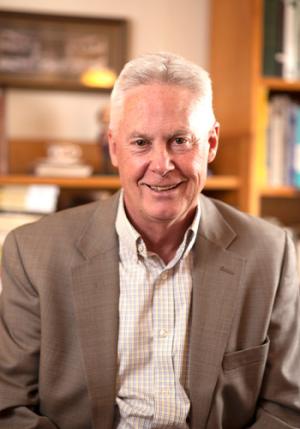
They begin the year by being chained and freed in Plato’s Allegory of the Cave. Then, after a year of reading and discussing classical and contemporary texts, they must stand in front of their classmates and articulate their personal understanding of the good way of life. It’s an exercise that, for many of them, comprises the five most stressful minutes of their freshman year, and one which their teachers understand as a lifelong project that none of us ever quite completes—and which we all hope will be graded mercifully.
Dr. Gary Bouchard is a professor of English at Saint Anselm College, and the executive director of the college's Gregory J. Grappone '04 Humanities Institute.
As the director of the Gregory J. Grappone ’04 Humanities Institute, my inbox contains articles written each month about the state of the humanities. Many of them speak eloquently of the power and critical necessity of the humanities in our contemporary world. Others speak despairingly of their neglect and decline. What, for the readers of Portraits Magazine, a publication named for the humanities program that helped shape a quarter century’s worth of Anselmians, can I add to this conversation?
You’ll understand if I turn to Shakespeare for help. He knew well the formula for tragedy was to bring audiences from well to woe (bloody bodies on the stage), and the formula for comedy was to take them from woe to well (a wedding dance!). My nature is comedic. So, with a qualified promise that all will be well, allow me to begin my story woefully, once upon a time on a bucolic New Hampshire hilltop familiar to us all. You know many of the characters. You still call some of them “professor.”
A Worrisome Tale
It would require a naiveté bordering on denial for my liberal arts colleagues and me, standing in classrooms that sometimes have a surprising number of empty desks, not to recognize that we have been teaching our way through a steady decline in the humanities for our entire careers, which for some of us span several decades.
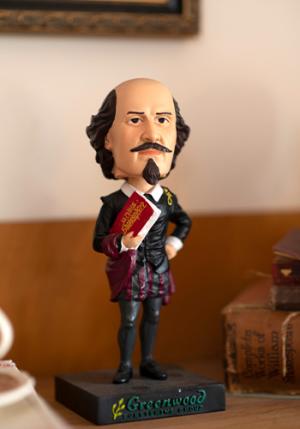
Last November, The Hechinger Report, a national nonprofit newsroom focused on education, reported the kind of data from the federal Integrated Postsecondary Education Data System that we have become accustomed to hearing. The report confirms that the number of students graduating with majors in the humanities in the United States “has fallen for the eighth straight year.” Depending upon which disciplines you count among the humanities—and the lists vary among institutions—these numbers represent a decline of “somewhere between 16 and 29 percent since 2012.” And if, like Saint Anselm College, you count the traditional humanities as including only English, history, philosophy, theology, classical and modern languages, and fine arts, you will have to acknowledge that roughly 95 percent of college students in the United States choose to major in something other than one of these fields. These numbers contrast unsurprisingly with those that show the steady increase of students majoring in pre-professional fields like business, engineering and health sciences.
It would be nice to imagine somehow that the bucolic hilltop where our story is set was somehow immune to these wider trends. But alas, Saint Anselm falls worryingly and predictably in line with the national data. The number of students majoring in traditional humanities fields at Saint Anselm in 2014 was 9 percent. In the fall of 2021, that number dropped to 6 percent.
The Untold Story
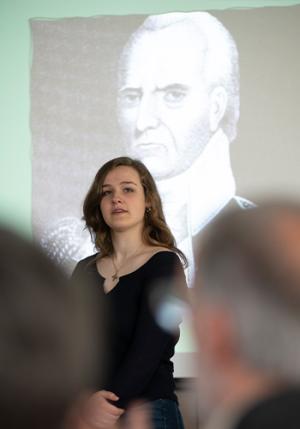
What most frustrates my faculty colleagues and me when we consider these trends is our knowledge that students are not steering clear of these majors because they don’t find the subjects interesting. Many of them had inspiring history or religion or art teachers in high school. Others discovered they had a facility for languages or real potential as writers. They would have liked to continue studying these subjects, but their parents, and ultimately, they too, bought into a pervasive and sinister misconception that to do so would lead them to work as a barista beneath the weight of crushing student loan debt.
The problem of mounting student loan debt is real for nearly all college students. The notion that liberal arts majors do not attain good jobs and bright futures, however, is a false narrative, reinforced by rhetoric across the political spectrum, which steers many high school seniors away from the things they desire to learn. So, what is the real story?
We know that humanities majors not only register the top scores on the Graduate Record Exam but also achieve in places you might not expect. Asked to name which majors lead the way in medical school admissions, for example, most people would guess the biological or physical sciences, or maybe math and statistics. In fact, humanities majors are at the top of that category. The top qualifiers for law school based on composite GPA and LSAT scores? Probably political science or criminal justice, right? In fact, three of the top four majors in that category are philosophy, history, and English, all of which top those other two disciplines by a good margin. Among the majors with the top GMAT (Graduate Management Admissions) scores, we find philosophy, history, art history, English, and classical and modern languages all in the top 20, well in front of accounting, business, management, and marketing majors.
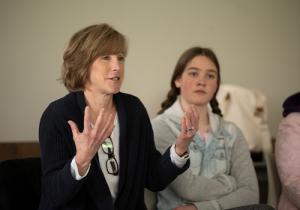
And although the number of graduates pursuing post-graduate degrees continues to increase, many liberal arts majors will enter directly into the workforce upon graduation. Since the attributes most sought by employers continue to be oral and written communication and problem solving (ranked 23 percent higher than technical skills), liberal arts majors are going to find themselves in a wide variety of careers at which they will succeed wonderfully, and will very frequently end up in leadership positions.
The truth is—as my very successful philosophy major and English major sons will gladly tell you—liberal arts majors are far more likely to open their own coffee shop than work as a barista in someone else’s. Humanities graduates report equal or higher career satisfaction than their peers. And though it’s true the average financial return on investment for graduates of liberal arts colleges is less than that of graduates from other institutions in the first 10 years of their working life, when you stretch that number to 40 years, these graduates’ earnings surpass those who attended non-liberal arts institutions. In worldly earnings, as in so many things, the humanities are, as Ken Burns reminds us, “the tortoise.”
Who am I? What is my responsibility toward others?
Since 2018, the Gregory J. Grappone '04 Humanities Institute has hosted more than 100 Come Friday Forums. Led by students, faculty, and staff from many departments, as well as some alums, these weekly gatherings send people away with a stronger sense of our shared humanity.
Making a Living
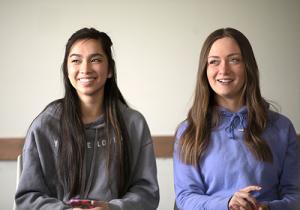
As a reader of this publication, you know all this. And, of course, so do we. In weekly conversations with Saint Anselm alums, my colleagues and I do not hear stories of woe. We learn that our former students are putting their educations to work in innovative ways, leading the way in marketing, public relations, finance, journalism, publishing, health care, human resources, social work, creative production, entertainment, graphic design, technology, hospitality, government service, the military, law, and law enforcement.
We follow their careers as entrepreneurs, educators, coaches and administrators in elementary, secondary and higher education. We read of their achievements and know them to be building lives of meaning and purpose, focusing on human relationships, raising children, volunteering, helping to foster communities of faith and support. We also hear what books they are reading.
These alums have come to understand what their teachers knew all along: that the work they did in and out of the classroom—every paper, every exam, every major and minor, every discussion and debate, every presentation, every sports victory or defeat, every service trip, every club activity, every trip abroad, every internship, and every conversation—was a vital part of their pre-professional life.

We also know that our Saint Anselm alums, like ourselves, are still at work on that ongoing project of describing the good way of life, of understanding themselves, as well as their relationship with others and their relationship with God. Often through triumphs as well as profound personal struggles and challenges that are an inevitable part of all of our lives, they have come to recalibrate their goal of “making a living” into “making a life worth living.”
Ultimately, for all the professional and economic benefits that flow from a foundational knowledge in the humanities and the many associated skills that they help develop in us, their value is immeasurable. When I sat down with Ken Burns this spring and began our conversation by asking him whether the humanities were in crisis, he responded by observing, “We live in an era, particularly now, but it could be any other time, when we have become economic units and not spiritual beings. And something has to rescue us from that, and the only thing we have to do that is the humanities.” It’s a bold claim, but when we consider the kinds of questions posed and knowledge offered in the traditional liberal arts classes at Saint Anselm, we understand just what he means, especially when he points out that the humanities are criticized as being “somehow at odds with faith, and nothing could be further from the truth.”
What is my relationship with the divine?
Engaging people of all backgrounds with questions and ideas that arise from common and uncommon experiences, conversations during Come Friday Forums often lead to topics for future discussions — allowing everyone who is interested to continue the conversation.
Why a Humanities Institute?
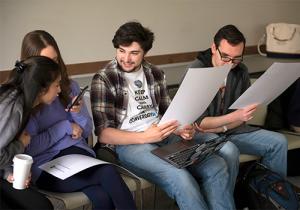
To be honest, the motivation for a Humanities Institute at Saint Anselm when it originated with the chairs of the seven traditional liberal arts departments in 2015 was far from spiritual or even particularly intellectual. It was existential. In the wake of the college’s recent curriculum reform, with eyes on the diminishing numbers of majors represented in the data shared earlier in this story, we came together one afternoon in Bradley House in the kind of shared solidarity that only fear can beget. Paradoxically, far from the idyllic lawns and hallowed buildings of our campus, a retired automobile executive and his wife found themselves moved by a much higher purpose. A providential joining of their interests with ours would ultimately lead to the creation of the Grappone Humanities Institute.
Bob and Beverly Grappone were looking for a way to honor and fulfill their deceased son Greg’s (SAC Great Books, 2004), dream of supporting the humanities at Saint Anselm, and their vision was exactly what their friend Ken Burns described: helping people to recognize that they are spiritual beings.
Meanwhile, our original proposal for a humanities institute, which had been born out of worry and an us-against-ST(H)EM mindset, was about to have an encounter at the Faculty Senate that would change everything. Our colleagues from a wide variety of academic disciplines asked us, in effect, why we were seeking to build a safe cloister for the humanities when we could be creating a wide-open amphitheater? They confronted us with the simple truth that all faculty and staff, all students, alumni and friends were, well, human. As humans, every one of us has an interest in and needs a voice in the humanities.
The revised and substantially more inclusive proposal that resulted from this process was much more aligned with the higher vision that was motivating Bob and Beverly Grappone to make a transformative gift that would lead to the Institute’s founding in 2018. The Institute’s initial slogan tells the story of its providential beginnings as well as anything: Humanity: Everyone’s a Member.

As with Portraits of Human Greatness of old, as with Conversatio, as with the Symposia of Socrates in ancient Greece, and as in most learning that happens at Saint Anselm College, the essential component of the Humanities Institute is the human conversation. One hundred and one of those conversations, led by faculty, students, and staff from over two dozen departments, have taken place on every Friday during the academic year for the past four years in Come Friday forums. We started by considering whether dogs have souls and most recently pondered over what makes a good childhood. In between, 99 other questions—“Can anybody really forgive and forget?” “Is there a difference between law and justice?” “Why is it so hard to recognize and acknowledge racism?” “What makes a person a person?” —have brought together students, faculty, staff, and guests from the community to consider questions common to our humanity, to examine our lives, to make them worth living.
These weekly Friday forums are a ritual that keeps us anchored, but we also sponsor an annual Big Thought series of programs with an interdisciplinary theme each year. We have launched a successful student-produced podcast, an alumni book club, 20 integrated humanities courses, a new humanities minor, and are at work on a forthcoming annual student journal, and a senior scholarship. All of this is aimed at fulfilling the Institute’s mission of “engaging people of all backgrounds with questions and ideas that arise from our common and uncommon experiences” so that we can “better understand the meaning and purpose of our lives.”
Here, the Humanities Matter
Now, because of the vision and generosity of the Grappones and our generous alumni and friends, as well as a $500,000 matching grant from the National Endowment for the Humanities, our Institute is about to have a permanent home. By this time next year, the Gregory J. Grappone ’04 Humanities Institute will have evolved from an idea to an earnest discussion, to a resolute vision, to a vibrant and engaging collection of formal and informal programs flowing out of the newest, and we believe one of the most inspiring, buildings on campus.
Will this new home, the weekly conversations, teaching, and public humanities programs happening inside, reverse national trends and begin to repopulate traditional liberal arts majors at Saint Anselm? That much is aspirational. However, I did promise you a happy ending.
By next summer, when visitors to the Saint Anselm campus exit the Savard Welcome Center, the very first building they see will be a beautifully renovated historic structure that was once a boiler house, an art studio, a print shop, and is now—with its distinctive and funky smokestack reaching up into the air—a humanities institute. Here, this building will proclaim by its very presence, the humanities matter. Here, people who step inside the doors will discover, there are conversations worth having, ideas worth pondering, lives worth examining. Here, students from every background and major will come to know, is a place where they can—in the very truest sense—begin to make a living.
